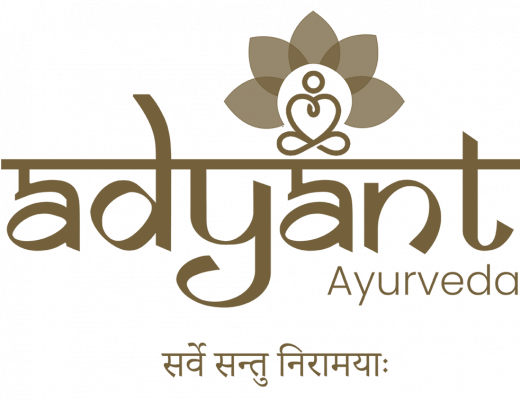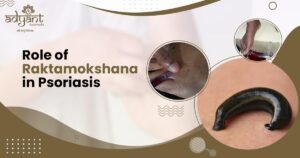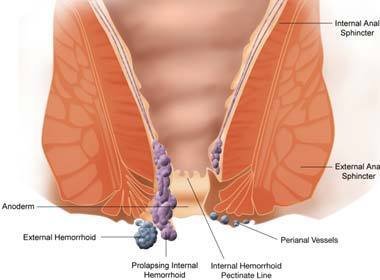Basti Treatment in Ayurveda
Basti is one of the important treatment protocols described in Ayurveda. It is considered as ‘Ardha Chikitsa or Half treatment as many disorders can be treated with the help of Bast. Basti Treatment in Ayurveda is one of the panchakarma treatments prescribed by Ayurveda Acharyas. It is a treatment method where in oil, ghee, herbal decoction, or medicated milk is given through anal, urethral or vaginal route.
The word Ayurveda has two terms, Ayu and Veda. The term Ayu means life and Veda means life. Ayurveda means science of life or that school of medicine which deals with different aspects of life, its span, basic needs, food, exercise and various components of life and its modalities. Ayurveda which is one of the oldest medical system which has its origin India has always believed in holistic healing of body, mind and soul through various treatment protocols which not only treat the disease but also address the disease from its root.
Ayurveda from long has always believed in coexistence of body, mind and soul components and their harmony is what gives an individual a state of health or wellbeing. Ayurveda strongly propagates preventive methods to the disease occurrence but it has a strong scientific base to treat the diseases as well which occurs due to unhealthy practices, sedentary lifestyle, infections, autoimmune factors or any other reasons which are responsible for the manifestation of the disease.
Vasti or Basti is a very effective treatment practiced by Ayurveda doctors around the world since hundreds of years has proven to be effective in boosting the immunity, strengthening the bones, muscles and nerve and nervous system. Vasti or Basti is a Sanskrit name which translates to ‘Urinary bladder’. In ancient time clean and sterilised urinary bladder was used to give medicines through the anal, urethral or vaginal region. So the treatment got the name from it. The treatment which was administered through the urinary bladder was came to be name as Vasti Chikitsa.
Classification of vasti on the basis of its functions
According to Acharya Sushrutha, the vasti are of 4 types
• Shodhana Vasti
• Lekhana Vasti
• Snehana Vasti
• Brumhana Vasti
Shodhana Vasti- The word shodhana refers to clean or cleanse or detox. The vasti in which the medicines are administered with the main aim of expelling the morbid doshas or toxins out of the system is known by the Shodhana vasti
Lekhana vasti: Lekhana means scraping. Lekhana vasti when administered properly scrapes off excessive fat which has accumulated in the body and is responsible to produce diseases in the body. When the unnecessary fat or morbid toxins are removed by the lekhana vasti treatment, it restores the normal functioning of the body, reduces obesity or over weight and thereby puts less pressure on the vital organs of the body.
Snehana vasti:Snehana means lubrication or to cause unctuousness or oilness to each and every cells of the body. Here medicated ghee or oil is used to give vasti treatment.
Brimhana Vasti :Brimhana means to promote bulkiness of the body . This is given mainly to enhance the quality and quantity of the muscles and to enhance the vitality of the tissues and to enhance the immunity and quality of the life.
Basti Treatment in Ayurveda classification according to number of days
• Karma basti (30 basti)
• Kala basti (16 basti)
• Yoga basti (8 basti)
Karma basti
1. 1st day Anuvasana
2. Next 24 days :12 niruha and 12 anuvasana
3. Last 5day anuvasana basti
Kala basti
1. 1st day anuvasana
2. Next 12 days :6 niruha and 6 anuvasana
3. Last 3 days anuvasana
Yoga basti
1. 1st day anuvasana
2. Next 6 days: 3 niruha and 3 anuvasana
3. Last 2 days anuvasana
Importance of Basti Treatment in Ayurveda
• It helps in the expelling of the morbid doshas which ultimately helps to
detoxify the body of both body and mind ama or toxins
• Helps to pacify the increased or aggravated doshas
• It promotes bulk and thereby nourishes each and every cells and tissues
in the body
• Establishes and age and helps to promote longevity and establishes
Youthfulness to body and mind
• It is good for proper functioning of the sense organs
• Relieves stress and anxiety
Basti Treatment in Ayurveda taken from the best Ayurveda panchakarma treatment helps to enhance colour and complexion, enhances strength and immunity and thereby promotes health and improves the quality and quantity of life and life span
ROUTES OF VASTI ADMINISTRATION
There are different routes of vasti administration. They are as follows
Anal route
Administration of vasti medications through the anal route is a sure treatment for vata imbalances.
Urethral route
Vasti given through the mutra marga in women and uro genital route in men is given to treat uro- genital disorders.
Procedures of Basti Treatment in Ayurveda
Poorvakarma
• Patient is subjected for abhyanga and swedana.
• Position of the patient: patient is made to sleep over a well spread and not very high bed which is uniform in level or which is slightly low in level at the head.
• The patient should lay on droni with comfortably on his left side (as grahani and guda situated on left side of the body and are remained in their natural position which helps for easy absorption and proper spreading of potency.)
Pradhana karma
• Hold the basti with right hand, the anus of the patient should be lubricated
• The lubricated nozzle should be inserted into anal canal upto 1/4th part from the top slowly and straight following the position of the vertebral column.
• After administration of the basti the patient should sit in squatting position and should wait for evacuation of administered basti medicine. Maximum time for the evacuation is 48 minutes.
Paschat karma
• After the evacuation patient is advise to take bath. Pathya bojana should be given according to the dosha and agni.
Complications
If basti Dravya stays for a longer time then it may cause
• Abdominal pain
• Fever
• Abdominal distention
If basti Dravya is not evacuated after 48minutes then teekshna basti which contain kshara, mutra, amlata should be administered.
Benefits
• Prevents ageing
• Promotes sturdiness of body
• Promotes longevity, strength, power of digestion
• It cures all diseases by removing accumulated dosha from entire body
• Alleviates tridosha
• Enhances clear perception by all sense organs.
ANUVASANA BASTI
Basti which Sneha (oil/ghee) is used for administration. As Sneha is using in anuvasana basti the word Sneha basti can be considered as synonym for the anuvasana basti.
Classification
1. Snehabasti
2. Anuvasana basti
3. Matra basti
Dose fixation of anuvasana basti
• Sneha basti 6pala ie 300ml
• Anuvasana basti 3 pala i.e, 150ml
• Matra basti 1 1/2 pala ie,75ml
Procedure
• Anuvasana should always be given just after taking food
• Prior to that abhyanga and swedana is to be done
• After administration of Sneha, buttocks are to be patted by the palm
• Patient is advised lie on supine position
• Feet and both palms should be massaged
• Patient is allowed to stay in supine position up to the time needed to utter hundred syllables (Vak shat kala)
• Then the buttocks and the leg side are to be lifted slowly three times.
• Then evacuation of Sneha Dravya takes 9-12 hours
• If anuvasana does not return or partially returns without any complication this condition is allowed to maintain.
Benefits of Basti Treatment in Ayurveda
• Anuvasana promotes complexion and strength in person of whom all the channels of the body are cleansed by niruha
• It gives strength and nourish the body
• Person will have the nourishment of dhatus in the body
• Person will have well co-ordination between body, mind and sense organs
• Especially useful for the patients afflicted by vata dosha
• Administration of oil instantaneously improves digestive strength
MATRA BASTI
Type of Sneha basti in which less quantity of oil is administered irrespective of seasons and does not produce any complications.
Indications
• Persons emaciated by excess activities
• Exercise
• Weight lifting
• Riding vehicle
• Person who are weak
• Person afflicted with vata
Benefits
• Promotes strength
• Easily administered without complications
• It helps in easy voiding of stools
• It nourishes the body
• It cures disease aggravated by vata
UTTARA BASTI
Basti is administered through urethral or vaginal route (uttaramarga),
Word Uttara means superior; it is named because basti is giving great benefits.
Indication
• Disorders of urinary bladder
• Prolapse of uterus
• Menorrhagia
• Retention of urine
• Dribbling incontinence
• Menstrual disorders
• Infertility
Contraindications
• Urethral strictures
• Bleeding disorders
• Ca bladder
• Hypoepispadiasis
Procedure of uttarabasti
• Person should undergo niruha basti procedure before Uttara basti procedure begins
• Snehana and swedana done in low back region
• Patient asked to void urine before the procedure
• Patient should sit comfortably on a soft seat of knee height
In males
• Patient is brought to basti room and advised to sit on the stool having the knee height, penis is made to erect
• Basti netra is lubricated, introduced along the direction of perineal raphe such a way that neither too excessively nor too insufficiently.
• Netra is carefully introduced into mutramarga and basti putaka is compressed uniformly.
• Then remove the netra leaving some oil in putaka.
In females
• The patient is made to lie down in supine position, then she is made to fold her legs to knee (lithotomy position)
• Basti netra is lubricatedwith Sneha is carefully introduced, putaka is compressed uniformly so that Dravya enters the vaginal route.
• Patient is advised to be in supine position for 10 minutes
• Patient is advised to take rest
• Diet is asked to be followed
Erandamoola niruha basti
Erandamoola has been used widely in many vatavikaras associated with kaphadoshas.it alleviate aggravated vata and kapha doshas from the body.
Indications:
• Low back pain
• Lumbar spondylosis
• Sciatica
• Urinary tract infection
• Distension of abdomen
• Urinary calculi
• Irritable bowel syndrome
Mustadi yapana basti
Yapana basti is considered as basti which enhance the life span of individual.
It can cure all types of disease, it performs pranadharana karma (protects the prana i.e., life), it possesses the both qualities (lekhana and bruhmana)
Indication:
• Neurological disorders
• Strengthens the body
• Rasayana
• Aphrodisiac in nature
• Ano rectal disorders
• Muscle weakness
• Inflammatory joints of joints
Lekhana basti
The ingredients of basti are the drugs that clarifies the protoplasmic contents of the tissue cells and thus gradually clears the system of its deranged constituents is known as lekhana. It causes the excoriation of the excessive fat from the body.
Indications
• Obesity
• Hypercholesterolemia
• Pcod conditions
Vaitarana basti
Basti is powerful in a sense that it brings back life of the person who is about to die (ref: shabdakalpadruma).
Indications
• Rheumatoid artritis
• Low back pain
• Lumbar spondylosis
• All type of pain
• Distension of abdomen
Tikta ksheera basti
Main ingredients are tikta Dravya and ksheera
Bones and joints are involved in asthyashrita vyadhi,when tikta ksheera basti is administred it will act on the bone which arrest the progress of disease.they are considered to be effective in bone related diseases.
Indications
• All types of arthritis
• Lumbar spondylosis
• Low back pain
• Sciatica
Manjistadi kshara basti
Manjistadi kshara basti is effective in srotovarodhana, it is specially indicated in vataja, pittaja and raktaja vitiated condition. It is also considered as prasadaka and tridoshahara.
Indications
• Paralysis
• Gouty arthritis
• Skin diseases
• Inflammatory conditions
• Thromboangitis obliterans/ buergers disease
• Non healing ulcers
• SLE
Takra basti
Basti prepared using buttermilk
Indication
• Irritable bowel syndrome
• Diarrhoea
• Haemorrhoids
• Digestive disorders
Summary
In Ayurveda, “Basti” refers to an important therapeutic procedure known as “Ayurvedic enema” or “medicated enema.” It involves the introduction of herbal oils, decoctions, or medicated substances into the rectum to promote healing and balance within the body. Basti is considered one of the most powerful and effective treatments in Ayurveda.
Basti treatments in Ayurveda are believed to have numerous benefits, including:
- Balancing and strengthening the digestive system
- Eliminating toxins and waste materials from the body
- Relieving constipation and promoting regular bowel movements
- Nourishing and rejuvenating the tissues
- Alleviating joint pain and inflammation
- Improving overall health and well-being







